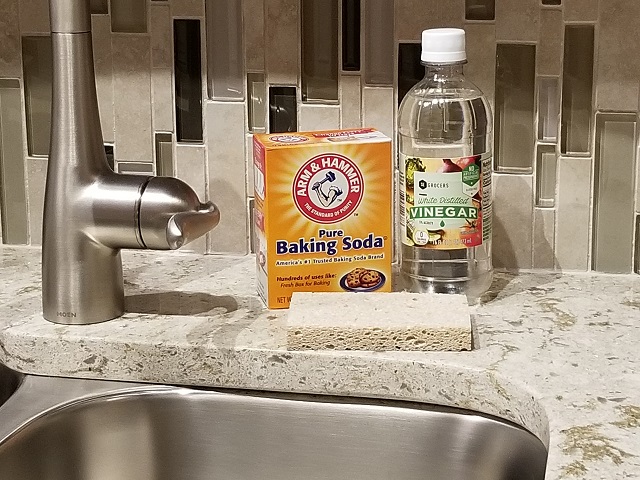I had the question again this morning from a client: “Can my stainless steel sink rust?”. While the answer is, technically, ‘Yes, it can,’ the more appropriate answer is, “That’s probably not the problem you have.”
Is My Sink Rusting?
The rust you see is most likely NOT from your stainless steel sink but residual rust from another source that is deposited onto your stainless steel sink. It’s like water spots on a drinking glass – impurities left over after water has dried up and not destruction of the glass itself.
The most likely culprit is metal cookware left in the sink to dry. Cast iron pots, some metal baking sheets, or certain types of flatware all have the ability to oxidize in water, and that oxidation is rust. The small amounts of rust then mix with water; the water pools in your sink; the water dries; and POOF! It looks like your sink has rusted.
Unfortunately, the brushed grain of stainless steel makes it an ideal surface to capture these pesky deposits. Luckily, it is easier to explain how to clean it up than it is to explain how it got there in the first place.
Remove the Rust
You probably have all the necessary ingredients to concoct this special, super-secret rust remover right in your kitchen. All you need is baking soda, vinegar, and a sponge. That’s right, the same ingredients used to fashion many a 5th grade science project is all you need to remove those pesky rust deposits from your sink in 5 easy steps:

-
Pour some baking soda into a bowl. Depending on how much rust you need to remove, you could use anywhere from a tablespoon to ¼ cup or more.
-
Slowly stir distilled vinegar into the baking soda to create a paste. Remember the lava flow you got in school when you quickly combine equal amounts of these two? You don’t want to do that here. Add just enough to create a paste – somewhere between toothpaste and liquid hand soap is the consistency you want.
-
Spread the paste on the rust deposit. Let it set anywhere from a minute to 10 minutes, depending on how stubborn the rust is.
-
Use a sponge to rub the baking soda mixture into the rust deposit. A quick note – notice that the stainless steel sink has a brush stroke grain to it. You want to rub WITH the grain of the steel, not across it. Baking soda does have some abrasiveness to it – rubbing across the grain could create unwanted scratches.
-
Rinse away baking soda residue with running water.
That should do it. If you have a stubborn rust deposit, you might have to repeat the process a time or two.
It Always Does the Job
In over 25 years of designing and remodeling kitchens, I cannot tell you how many times I’ve had a panicked call from a client insisting that their brand new, stainless steel sink is rusting. Every single time I have received that call to date, this process has done the trick. It’s saved thousands of dollars in unnecessary replacements and countless headaches for homeowners. It should work for your too.
